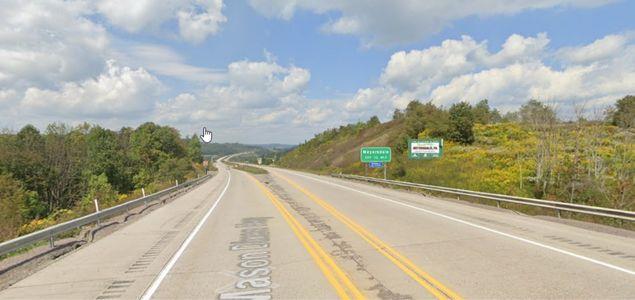
With construction season on the horizon, the commonwealth recently highlighted funding made available through the federal Bipartisan Infrastructure Law (BIL).
This past winter the Southern Alleghenies Rural Planning Organization's 12-Year Plan (TYP) was updated to include funding supporting the construction of the U.S. 219 expansion in Somerset County. The commitment builds on Governor Shapiro's focus on maintaining Pennsylvania's roads and bridges while promoting economic development.
"This is another important step in the ultimate goal of expanding the four-lane limited access facility from Somerset County to Interstate 68 in Maryland," PennDOT Engineering District 9 Acting Executive Vince Greenland said. "As we acknowledge the significant accomplishment of the work that has been completed so far, we also look forward to working through the challenges to secure the additional funding that is needed to complete the project."
The TYP for Southern Alleghenies now includes $136 million toward the Pennsylvania portion of the construction of the U.S. 219 corridor from Meyersdale, Somerset County, PA, to Old Salisbury Road, Garret County, MD. The project is currently advancing through preliminary engineering and environmental studies to select a preferred route to upgrade the county's last remaining two-lane section of U.S. 219 to a four-lane, limited-access highway. The total amount needed for the construction phase of the Pennsylvania portion is approximately $240 million.
The inclusion of the $136 million on the TYP assumes the additional federal funding provided by the BIL will continue after its current expiration on September 30, 2026. Additionally, PennDOT is planning to apply for a future Multimodal Discretionary Grant (Rural) – an opportunity created through the BIL – to help close the gap between the announced funding and the current construction estimate.
 As part of the Appalachian Development Highway System, U.S. 219 qualifies for federal Appalachian Development Highway System funding which was created in 1965 as a way of funding corridor projects that would provide access to regional and national markets, contributing to growth opportunities and improved access in Appalachia.
As part of the Appalachian Development Highway System, U.S. 219 qualifies for federal Appalachian Development Highway System funding which was created in 1965 as a way of funding corridor projects that would provide access to regional and national markets, contributing to growth opportunities and improved access in Appalachia.
The studies underway are intended to advance the portion of U.S. 219 from the southern end of the Meyersdale Bypass to the northern end of the recently completed U.S. 219/I-68 interchange near Old Salisbury Road in Maryland.
While the pre-construction funds for the U.S. 219 project have been secured, federal, state, and local officials will need to continue to work closely to find a solution to secure funding for the construction phase of this project.
The design team is currently performing resource agency coordination, environmental data collection, and starting to engage local public officials and residents for their input on the project.
*Since the original publication of this article, the Federal Highway Administration has, in coordination with Pennsylvania Department of Transportation and Maryland Department of Transportation – State Highway Administration, published the project's Notice of Intent to prepare and Environmental Impact Statement in the Federal Register to solicit comments from public agencies and stakeholders.
Subscribe to PennDOT news in Bedford, Blair, Cambria, Fulton, Huntingdon, and Somerset counties at www.penndot.pa.gov/District9.
Information about infrastructure in District 9, including completed work and significant projects, is available at www.penndot.pa.gov/D9results. Find PennDOT's planned and active construction projects at www.projects.penndot.gov.
Follow local PennDOT information on Twitter and like the department on Facebook and Instagram.
ABOUT THIS BLOG
Did you know PennDOT is directly responsible for nearly 40,000 miles of highway and roughly 25,000 bridges? We oversee programs and policies affecting highways, urban and rural public transportation, airports, railroads, ports and waterways, in addition to administering the state's more than 11 million vehicle registrations and 8.8 million driver's licenses.
So, how do we do what we do? And how can we help you travel in Pennsylvania — whether it be for business or leisure — in safe and enjoyable manner? Read PennDOT Way to learn more about the department, what we do, and how and why we do it.
TAGS
50-Year Anniversary, 511PA, Aggressive Driving, Airports, Autonomous Vehicles, Bicycles, Bridges, Child Safety, Community Relations, Construction, COVID-19, Distracted Driving, District 1, District 10, District 11, District 12, District 2, District 3, District 4, District 5, District 6, District 8, District 9, DOTcom, Driver and Vehicle Services, Emergency Responders, Employment, Equity, FAQ Friday, Human Trafficking, Impaired Driving, Innovations, Live Free Ride Alive, Maintenance Monday, Motorcycles, Older Drivers, PA Motorcycle Safety Program, Pedestrians, PennDOT Connects, Ports, Public Transit, Railroads, REAL ID, Road MaP, Roadside Beautification, Rural Roads, Safety, School Buses, Seat Belts, State Transportation Innovation Council (STIC), Sustainability, Teen Drivers, Throwback Thursday, Transportation Funding, Travel in PA, Welcome Centers, Winter, Work Smart, Work Zone, Yellow Dot
LATEST POSTS
PennDOT Continues Sharing, Updating Resources for Local Governments to Pursue Bipartisan Infrastructure Law Funding Opportunities
Norwin High School Wins 2024 ‘Innovations Challenge’
Demo Complete: I-95 CAP Project in Center City Philadelphia
PennDOT Archeologist Connects Past, Present, and Future
Lehigh Valley DUI, Highway Safety Task Force Hosts Law Enforcement Seminar
ARCHIVES
2024
2023
2022
2021
2020
2019
2018
2017

